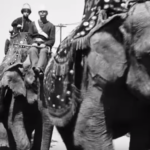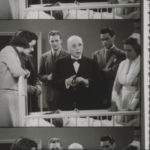The Archival Successes and Tribulations of Three Authors
Exploring archives and other sources of research material for publications on moving-image topics can be a pleasure, or a mighty challenge.
Here, three authors of recent books describe the range of experiences they had as they prepared their books, published over the last few months.
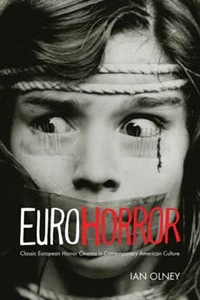 In preparing his Euro Horror: Classic European Horror Cinema in Contemporary American Culture (Indiana University Press), Ian Olney faced some obvious hurdles. In his book, the York College of Pennsylvania film-studies professor discusses the history and appeal of “Euro Horror” movies that made their way to American drive-in and urban grindhouse cinemas in the 1950s. Fans embraced them; critics denounced them as cinema trash because they deplored what they saw as gory, sexualized terror in such genres as giallo films from Italy, S&M horror, and lesbian-vampire and cannibal-zombie films.
In preparing his Euro Horror: Classic European Horror Cinema in Contemporary American Culture (Indiana University Press), Ian Olney faced some obvious hurdles. In his book, the York College of Pennsylvania film-studies professor discusses the history and appeal of “Euro Horror” movies that made their way to American drive-in and urban grindhouse cinemas in the 1950s. Fans embraced them; critics denounced them as cinema trash because they deplored what they saw as gory, sexualized terror in such genres as giallo films from Italy, S&M horror, and lesbian-vampire and cannibal-zombie films.
Since the 1990s, these films of “the golden age of twentieth-century Continental European horror cinema,” which Italian, Spanish, and French auteurs pumped out like blood from a slaughterhouse, have attracted a cult following in America.
At the time they were made, many of the films found their way to rural American drive-ins and urban grindhouse theaters. They were, Olney writes, “gorier, sexier, and just plain stranger than most British and American horror films of the time.” So, hardcore genre fans embraced them.
Euro horror output slumped after the mid-1980s, and even today the popular works receive little attention in the field of film studies, Olney writes. But they have lived on in cult status and in homages by the likes of Quentin Tarantino, Robert Rodriguez, and Eli Roth.
Olney argues that the films lag in critical reception and study due to a “lingering aesthetic, ideological, theoretical, and cultural prejudices that continue to define which films are considered worthy of serious study within academia.”
Harry M. Benshoff, author of Monsters in the Closet: Homosexuality and the Horror Film says the book is “guaranteed to send scholars and fans running back to their DVD outlets, either to discover or revisit some of the oddest and most provocative horror films of all time.” Olney succeeds in “arguing for the value of Eurohorror generally to a contemporary politics of identity,” says Peter Hutchings, author of The Historical Dictionary of Horror Cinema. The book “traces the emergence, disappearance, and return of Euro-Horror within US culture since the fifties, its revilers and devotees, its subversive potential, and its echoes in the work of filmmakers like Haneke, von Trier, or Almódovar,” says Macalester College film scholar Linda Schulte-Sasse. “In the process, Olney explodes the last of our treasured binaries: art vs. schlock, ‘real’ vs. fan scholar, hack vs. auteur, progressive vs. regressive movie.”
But finding the films he wished to discuss was not easy, reports Olney. Here, he describes how poor archiving obstructed his research:
In researching and writing Euro Horror, I had recourse to few archival materials. Unfortunately, the films I focus on in the book (Continental European horror movies made between the mid-1950s and the mid-1980s) have not generally been viewed as archive-worthy. This is partly the result of their genre (horror), partly a result of their place in popular culture (low), and partly a result of the fact that they don’t conform to the critically vaunted model of European cinema (art). Consequently, I was forced initially to access them on videotape and DVD via “gray market” mail order catalogs and websites – although they have since become more widely available on DVD and Blu-Ray, and even in theatrical re-release. It would have been wonderful to have been able to work with the films themselves (and related materials) in an archival setting; unfortunately, this just wasn’t possible. I even had difficulty tracking down publicity stills from these movies to use as illustrations in the book. This perhaps highlights the extent to which an “archival hierarchy” still exists with regards to film – one that largely excludes the sort of “lowbrow” cinema discussed in my book.
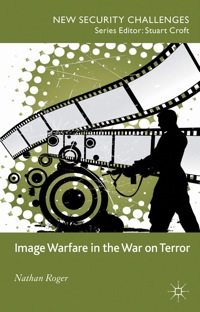 In Image Warfare in the War on Terror: New Security Challenges (Palgrave Macmillan), Nathan Roger argues that since 9/11, image warfare has replaced techno-war as the dominant form of combat, and that the West is lagging behind such opponents as Al Qaeda. Roger, a research associate at the Research Institute for Arts and Humanities at Swansea University, surveys the styling and deployment of disturbing images – bin Laden videos and films of such acts as suicide terrorism, hostage executions, and prisoner abuses – to create a new vocabulary for understanding and discussing them – with such terms as image munitions, counter-image munitions, and remediation battles.
In Image Warfare in the War on Terror: New Security Challenges (Palgrave Macmillan), Nathan Roger argues that since 9/11, image warfare has replaced techno-war as the dominant form of combat, and that the West is lagging behind such opponents as Al Qaeda. Roger, a research associate at the Research Institute for Arts and Humanities at Swansea University, surveys the styling and deployment of disturbing images – bin Laden videos and films of such acts as suicide terrorism, hostage executions, and prisoner abuses – to create a new vocabulary for understanding and discussing them – with such terms as image munitions, counter-image munitions, and remediation battles.
Here, Roger describes what he was able to do in his search for primary material about his subject:
To research this book I employed a “snowball sampling” technique where I used a combination of Google searches and clicking on links between websites to give me a diverse sample of images: news images, bin Laden videos, hostage videos, suicide terrorism footage, Abu Ghraib images, films, YouTube videos, street art, gallery art, cartoon images, advertisements, and more.
Because of the sheer amount of information available on the internet and because image appropriation and remediation does not have an end point – rather it is a constantly evolving process – a similar search today would result in the discovery of a number of new images ripe for study.
A challenge with this kind of research, due to the rhizomatic nature of the internet, can sometimes be tracking down images again after they have been originally collected. For example, weblinks to websites where images were originally discovered can quickly become out-of-date. However, you can often rediscover the images – reposted on other websites. This process of rediscovery can also lead to the discovery of new image appropriations and remediations.
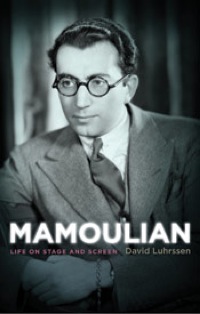 In Mamoulian: Life on Stage and Screen (University Press of Kentucky), David Luhrssen presents a study of the Broadway and Hollywood director Rouben Mamoulian (1897-1987), whom he calls “one of the twentieth century’s most important overlooked cultural figures.”
In Mamoulian: Life on Stage and Screen (University Press of Kentucky), David Luhrssen presents a study of the Broadway and Hollywood director Rouben Mamoulian (1897-1987), whom he calls “one of the twentieth century’s most important overlooked cultural figures.”
The exuberant, retiring, intelligent, cigar-smoking director was from a family of émigré Armenian Russians. His cosmopolitan rocked the political boat with such acts as his insistence on filling black-character roles with black performers – he created a sensation with an all-black production of Porgy in 1927, a few years after his arrival in New York from London, where his family had moved in the early 1920s.
On Broadway, Mamoulian went on to direct three of the most popular musicals in American history, Porgy and Bess (1935), Oklahoma! (1943), and Carousel (1945). But he also worked on the other coast, in Hollywood, just as sound arrived to revolutionize the medium. He innovated with lessons he had drawn from his studies and observations of great Russian directors such as Stanislavski. He innovated with unusual camera techniques and equipment, and took, writes Luhrsen, a lead role “in establishing the grammar of contemporary filmmaking.” At a time when early talkies were “static, stagy, and often slightly ridiculous,” Mamoulian “helped restore motion to motion pictures and eventually endowed them with color, cultivating all the while the idea that film could be artful as well as entertaining.”
But because he was something of a purist who insisted on his role as “an artist unwilling to compromise” his vision of film as not only commercial entertainment but also art, he met resistance in Hollywood, too. And he was close enough to artists outspoken about the corruptions of American ideals that he came under the scrutiny of federal authorities, as did so many creative artists of his time.
Mamoulian gradually gained respect in Hollywood. The Directors Guild of America awarded him the prestigious D. W. Griffith Award for Lifetime Achievement in 1983. But he remains too little recognized and known, suggests Luhrssen.
David Luhrssen is the arts and entertainment editor and film critic for the Shepherd Express, a Milwaukee, Wisconsin, alternative weekly. He is also the co-founder and director of the Milwaukee International Film Festival. He has published on a variety of historical and cultural subjects. He is the author of Elvis Presley: Reluctant Rebel and of Hammer of the Gods: Thule Society and the Birth of Nazism, in which he explores Nazism’s origins in the Thule Society, a Munich occult group based on theosophy and a political philosophy that asserted the racial superiority of Aryans.
Luhrssen describes the challenges of researching Mamoulian:
It would have been wonderful if his films were collected in a DVD box set, but Mamoulian releases have been spotty. Some things came out on VHS but not DVD. Other movies exist in what appear to be pirated DVDs – available by searching the Internet.
I am fortunate to live in a city with several good university libraries, UW-Milwaukee’s Golda Meier Library, and Marquette University’s Raynor Memorial Library. I received good assistance from Marquette librarian Bruce Cole, thanked in the acknowledgments, for his interlibrary loan work and other searches.
Because of Mamoulian’s Armenian heritage, searching the Armenian press for articles on him during his lifetime was part of my research. I found a few things, but most of the publications do not have indexes or online archives going back to Mamoulian’s era. Time did not permit as thorough a search as I would have liked.
My Freedom of Information Act requests reinforced my view of Mamoulian’s social-political positions and his ethical character: he was neither a Communist nor an informer during the McCarthy era. But of course, many of the documents remain redacted and gaps remain for future researchers to explore.
Previous Post: Amateur Newsreel Footage Brings It Home
Next Post: New Books on Moving Image Archiving, and Moving Images



